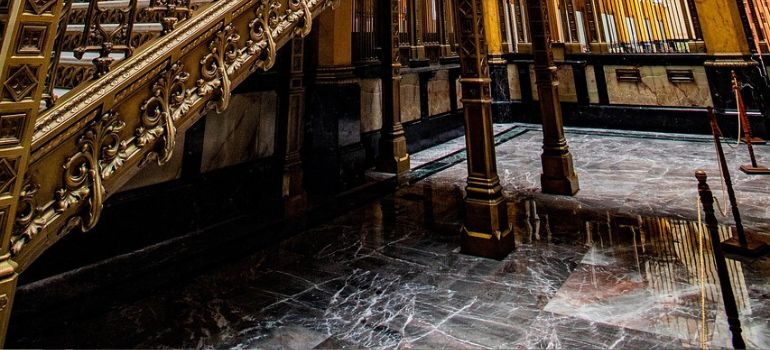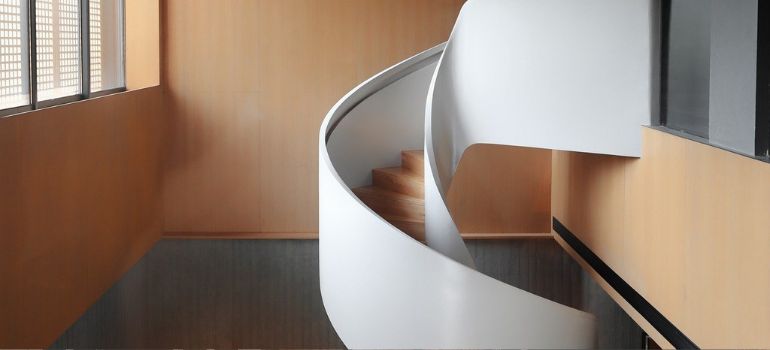Introduction
Finishing the underside of stairs is not only about aesthetics but also about preserving the structural integrity of your staircase. It can be a DIY project, but it’s essential to understand the process thoroughly before starting. This guide will help you navigate the steps involved, ensuring a successful outcome.
Planning and Preparation
Measuring and Assessing
Before you begin, measure the underside of your stairs to determine the amount of material required. Assess the condition of the existing finish, if any, and identify any repairs needed.
Choosing the Right Materials
Select materials that match your home’s style and your personal preferences. Plywood, MDF, and drywall are common choices for finishing the underside of stairs. Consider the durability and appearance of each material.
Safety Precautions
- Wear Protective Gear: Always prioritize safety by wearing the appropriate protective gear. This includes safety goggles to shield your eyes from dust and debris, gloves to protect your hands, and a dust mask to avoid inhaling harmful particles.
- Work in a Well-Ventilated Area: Ensure that the space where you’re working is well-ventilated. Proper ventilation helps disperse fumes from paints, stains, or adhesives, reducing your exposure to potentially harmful chemicals.
- Use Tools Safely: Familiarize yourself with the proper usage of all tools involved in your project. Follow the manufacturer’s instructions and safety guidelines for each tool. Keep sharp tools away from the reach of children.
- Handle Chemicals with Care: If you’re using paints, stains, sealers, or adhesives, be cautious with chemical substances. Always read and follow the safety instructions on product labels. Store chemicals in a secure location away from children and pets.
- Protect Against Dust: Sanding and cutting can generate a significant amount of dust. Consider using a dust collector or a shop vacuum to minimize airborne dust particles. Wear a dust mask to protect your respiratory system.
- Proper Ladder Usage: If your project requires access to higher areas, use a stable ladder that is appropriate for the task. Ensure that the ladder is on a level surface and that it’s set up according to safety guidelines.
- Avoid Overreaching: When working on a ladder or elevated surface, avoid overreaching, which can lead to loss of balance and accidents. Move the ladder as needed to access different areas.
- Electric Safety: If you’re installing lighting or electrical components, make sure to turn off the power at the breaker before working with wires and fixtures. If you’re unsure about electrical work, consider consulting a professional.
- Keep a First Aid Kit Handy: Have a basic first aid kit on hand in case of minor injuries. It should include bandages, antiseptic wipes, and any necessary personal medications.
- Plan for Emergencies: Familiarize yourself with the layout of your workspace and exits. In case of an emergency, such as a fire or injury, you should know how to evacuate safely.
- Stay Hydrated: Working on home improvement projects can be physically demanding. Drink plenty of water to stay hydrated, especially if you’re working in a hot or humid environment.
- Take Breaks: Avoid overexertion by taking regular breaks. Fatigue can lead to accidents, so it’s important to rest when needed.
- Secure Tools and Materials: Keep your work area organized and free of clutter. Secure tools and materials when not in use to prevent tripping hazards.
- Work with a Buddy: If possible, have a friend or family member nearby while you work. They can provide assistance in case of an emergency and offer an extra set of eyes to ensure your safety.
- Know Your Limits: If a task feels too challenging or risky, don’t hesitate to seek professional help. DIY projects are rewarding, but safety should always be the top priority.
Tools You’ll Need
To complete this project successfully, gather the following tools:
- Measuring tape
- Saw
- Sandpaper and a sander
- Screws or adhesive
- Insulation (if desired)
- Paintbrushes or sprayer
- Stain or paint
- Sealer
- Molding (if desired)
Step-by-Step Guide
Removing Existing Finishes (If Applicable)
If your staircase already has a finish that needs removal, start by carefully stripping it away. This step ensures a clean slate for your new finish.
Sanding and Smoothing Surfaces
Once the old finish is removed, sand the surfaces to create a smooth and even base. This step is crucial for achieving a professional look.
Installing the Underlayment

Attach an underlayment, such as plywood or MDF, to the underside of the stairs. This provides stability and a surface for the finish to adhere to.
Applying Insulation (If Desired)
If you want to improve sound insulation or thermal properties, consider adding insulation between the stairs’ underside and the underlayment.
Choosing the Finish
Decide whether you want a natural wood look, a painted finish, or something else entirely. Your choice will impact the subsequent steps.
Applying Stain or Paint
Apply your chosen finish evenly, following the manufacturer’s instructions. Multiple coats may be necessary for the desired look.
Sealing and Protecting
To ensure the longevity of your finish, apply a clear sealer or varnish. This step adds a protective layer that guards against wear and tear.
Adding Lighting (Optional)
To enhance the aesthetics and safety of your staircase, you can install LED strip lights or recessed lighting beneath the stairs.
Enhancing Aesthetics with Molding
To give your finished underside a polished look, add molding along the edges. This not only adds a decorative touch but also conceals any imperfections.
Maintenance Tips
- Regular Cleaning: To maintain the appearance of your finished underside, clean it regularly. Use a soft, damp cloth or a microfiber duster to remove dust and dirt. Avoid abrasive cleaners that can damage the finish.
- Inspect for Damage: Periodically inspect the underside for any signs of damage or wear. Look for scratches, chipping, or peeling of the finish. Address any issues promptly to prevent further deterioration.
- Touch-Up Paint or Stain: If you notice minor scratches or areas where the finish has worn down, consider touch-up paint or stain. Match the color as closely as possible and carefully apply it to the affected areas.
- Sealing Maintenance: If you’ve used a sealer on your finish, check it for signs of wear. Over time, sealers may degrade, allowing moisture and dirt to penetrate the finish. Reapply the sealer as needed to maintain protection.
- Addressing Water Damage: If you notice any water damage or warping of the material, investigate the source of the moisture and address it promptly. Fixing leaks or improving ventilation can prevent further damage.
- Molding and Trim: Inspect the molding and trim for any gaps or damage. Repair or replace molding as necessary to maintain a polished look and cover any exposed edges.
- Lighting Maintenance: If you’ve installed lighting under the stairs, check the wiring and bulbs regularly. Replace any burnt-out bulbs and ensure the wiring is secure to maintain proper illumination.
- Insulation Check: If you’ve added insulation for soundproofing or thermal purposes, ensure it remains in good condition. Replace any damaged insulation to maintain its effectiveness.
- Staircase Structural Integrity: Occasionally, inspect the structural integrity of the staircase itself. Ensure that no supporting elements are compromised and that the stairs remain stable.
- Reevaluate Style: Over time, your design preferences may change. Consider updating the finish or decorative elements if you want to refresh the look of the underside of your stairs.
FAQs
Yes, with the right tools and guidance, finishing the underside of stairs can be a rewarding DIY project.
Insulation is optional but can improve energy efficiency and soundproofing.
Use a wood stain to enhance the natural beauty of the wood.
The time required depends on the size and complexity of the project but can typically be completed in a weekend.
If you’re not comfortable with DIY projects or have a complex staircase design, it’s advisable to consult a professional.
Conclusion
Finishing the underside of stairs is a fantastic way to enhance the overall appearance and functionality of your home. With the right materials, tools, and a bit of patience, you can transform this often-overlooked space into a stunning feature. Whether you’re looking to create a warm, natural wood look or add a pop of color, this project is a worthwhile endeavor that can make a significant difference in your home’s ambiance.



